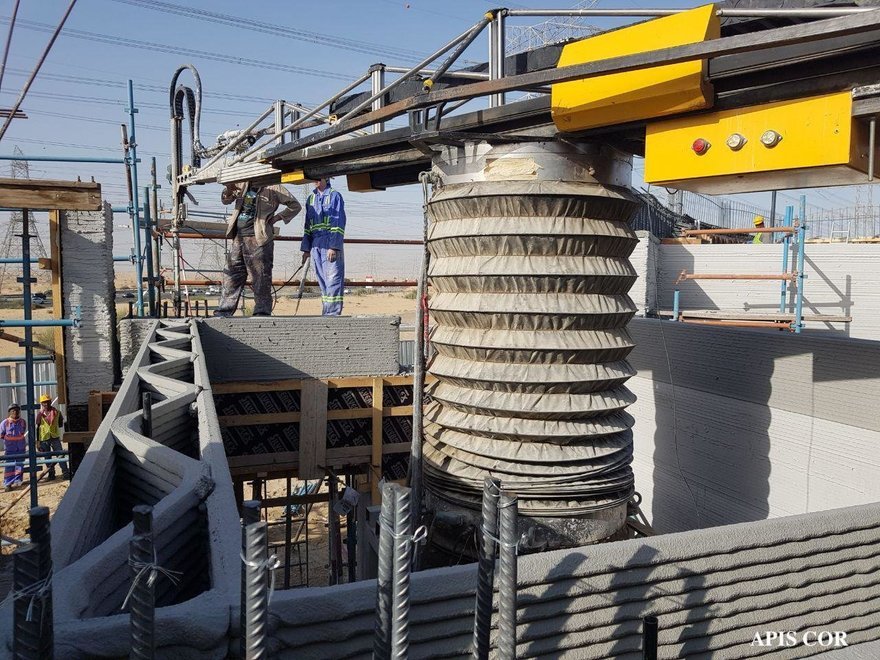A New Milestone for 3D-Printed Construction is Reached in Dubai
Apis Cor claims "the world's largest" 3D-printed building to date
3D-printing startup Apis Cor recently completed its latest claim to greatness: the "world's largest" 3D-printed building to date. The 6,889 square-foot, 31 foot-tall structure was built in Dubai—where the goal is to 3D print a quarter of new construction by 2030—and will serve as a government facility.
Enter a caption (optional)
According to Smart Cities World, the structure was built floor-by-floor and directly on-site in an uncovered area. The company created a printing mixture consisting of sand, cement, gypsum, and "other proprietary components." One of the main challenges with this type of construction is in finding the right blend of materials to withstand the local climate. "The Dubai climate is very harsh—temperature and humidity change significantly even within a day," says Apis Cor founder and CEO Nikita Cheniuntai. "The material has to behave the same way all the time, despite the changing environmental conditions."


The company's 3D printer was repositioned around the site and used to build the walls, but traditional construction techniques were used for the foundation, adding rebar, windows, and roofing. They say it took three weeks to complete the project.
In 2017 Apis Cor announced that they had completed a tiny home near Moscow in only 24 hours and for $10,000 but recent reports show that it actually took four months. 3D-printed construction is a promising field and advances are no doubt being made, but companies have a tendency to inflate their capabilities to appeal to investors. At least for now, we should take any lofty claims about affordability, speed, and structures being "entirely" 3D-printed, with a grain of salt.
-
oFavorite This
-
Q2Comment
K
{Welcome
Create a Core77 Account
Already have an account? Sign In
By creating a Core77 account you confirm that you accept the Terms of Use
K
Reset Password
Please enter your email and we will send an email to reset your password.


Comments
I think we should agree to call this frameless concrete pouring rather than 3D printing. 3D printing sounds like I hook this thing up and get a building a week later. Frameless concrete pouring means I get a foundation or walls that I then need to finish like any other structure (electricity, plumbing, plastering, roofing, etc.) The only bad part is, that's so much less alluring than, "3d- printed".
Everybody wants to be a tech company. 3D printing is the construction industry's attempt to give itself a tech halo, in order to get tech valuations from investors.